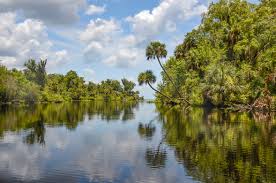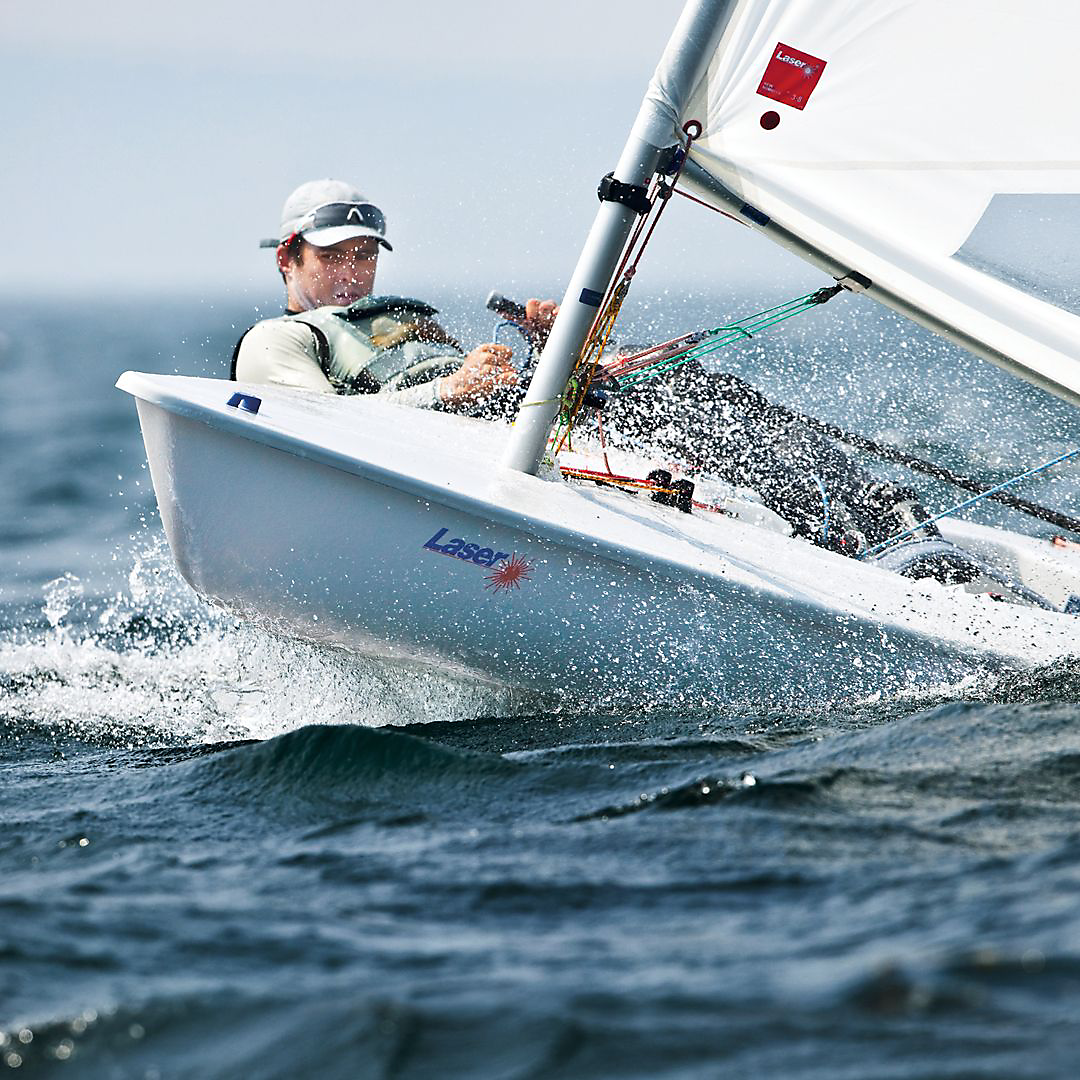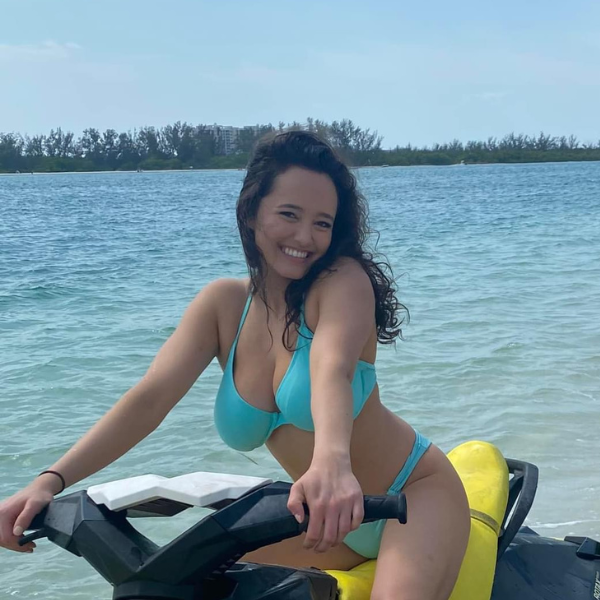Lake George Florida: A Scenic Retreat for Nature Enthusiasts
Lake George in Florida is a stunning and diverse destination perfect for outdoor enthusiasts.
This large, shallow lake is part of the St. Johns River system, offering a variety of recreational opportunities.

Visitors can enjoy boating, fishing, swimming, camping, and hiking in a serene, natural setting.
Located in northeastern Florida, Lake George is surrounded by lush vegetation and diverse wildlife.
The lake and its surrounding areas provide habitats for many species, making it a great spot for nature lovers.
With its mix of freshwater and brackish environments, the lake supports both freshwater and saltwater species.

Key Takeaways
- Lake George, Florida, offers a variety of recreational activities in a beautiful natural setting.
- The lake supports diverse wildlife, including both freshwater and saltwater species.
- Fishing is a popular activity at Lake George, with ample opportunities to catch different fish species.
Geography and Hydrology
Lake George is a broad and shallow brackish lake with a strong connection to the St. Johns River and several springs and waterways.
It is surrounded by conservation areas like Ocala National Forest and Lake George State Forest.
Connection to St. Johns River
Lake George is a part of the St. Johns River system. The river flows into the lake from the south, bringing freshwater and nutrients. The coordinates are approximately 29.28667°N, 81.59806°W. This connection affects the lake's water level and salinity.
The lake spans about 46,000 acres, making it the second-largest lake in Florida.
The river also provides a route for fish and other aquatic species, contributing to the lake's biodiversity. Lake George serves as a reservoir, helping to manage the flow of the St. Johns River.

Nearby Springs and Waterways
Several springs feed into Lake George, notably Silver Glen Springs and Salt Springs.
Silver Glen Springs is known for its crystal-clear water, attracting swimmers and divers. The water from these springs helps maintain the lake's shallow depth and brackish nature.
Juniper Creek and Salt Creek also empty into the lake, contributing additional freshwater.
These waterways are essential for maintaining water quality and supporting the vibrant aquatic ecosystem.
Islands and Conservation Areas
Drayton Island is located within Lake George, offering a unique habitat for various wildlife species.
The island is accessible by boat and is home to historical sites and natural beauty. Georgetown lies on the western shore, acting as a gateway for visitors.
The lake is bordered by the Ocala National Forest to the west and Lake George State Forest to the east.
These conservation areas protect the lake's environment and provide recreational opportunities such as hiking, fishing, and bird watching. These forests play a crucial role in preserving the natural landscape and biodiversity of the area.
History
Lake George, Florida has a rich and varied past. From its earliest Native American inhabitants to its strategic importance during World War II, the lake has played a key role in the region's development.
Native American and Colonial Past
Native American tribes, including the Timucua, originally inhabited the area around Lake George. They relied on the lake for fishing and other resources.
European colonization began in the 16th century when Spanish explorers arrived.
During the British control of Florida, the lake was named after King George III.
Notable botanist John Bartram explored the region in the mid-1700s, documenting its diverse flora and fauna. The area was sparsely settled but crucial for trade routes and agriculture.
From King George III to Modern Times
Under British rule, the lake was known as Lake George, honoring King George III. The Spanish Governor of Florida briefly regained control before Florida became a U.S. territory in 1821.
Throughout the 19th and early 20th centuries, Lake George remained relatively quiet, serving as a site for small settlements and farms.
Its strategic location on the St. Johns River continued to make it a significant point for transportation and commerce.
Economic Development and World War II
Economic activity around Lake George increased with the growth of the citrus and steamboat industries in the late 19th century.
Its brackish waters supported both freshwater and saltwater fish, making it a popular spot for fishing and recreation.
During World War II, the Pinecastle Bombing Range was established near the lake.
The range was used for training aircrews, which brought military and industrial attention to the area. Post-war, the region's economy diversified, adding tourism and outdoor recreation to its economic activities.
Ecology and Wildlife
Lake George is home to a diverse range of species and habitats. Key areas include native plants and animals, protected habitats, and migratory patterns of birds and marine life.
Native Species
The variety of species in Lake George is notable.
Alligators, for instance, are a common sight around the marshy shores.
Fish such as largemouth bass, crappie, shad, and bluegill thrive in these waters, making it a popular spot for fishing.
Bird enthusiasts can spot bald eagles, which are often seen soaring above the lake.
Additionally, there are southern fox squirrels and gopher tortoises in the surrounding woodlands. Florida black bears sometimes venture into the area, adding to the rich tapestry of wildlife.
Protected Habitats
Lake George features significant protected areas crucial for wildlife conservation.
The Lake George Wildlife Management Area covers more than 39,000 acres, including mixed hardwood swamps and pine flatwoods.
These habitats support a variety of species, offering food and shelter.
Marshes around the lake provide a sustainable habitat for many bird species and small mammals. Manatees can be occasionally seen here, benefiting from these safe environments.
Conservation efforts focus on preserving these habitats to support the ecological balance.
Migratory Patterns
Migratory water birds are frequent visitors to Lake George.
Each year, the lake serves as a stopover for species traveling along the Atlantic Flyway. This includes ducks, geese, and other waterfowl that migrate seasonally.
Marine animals such as the Atlantic stingray and schools of mullet also pass through the lake.
Their movement is influenced by the brackish nature of the water, which provides a unique environment supportive of both freshwater and saltwater species. Tracking these migratory patterns helps in understanding and managing the area's biodiversity effectively.
Recreation
Lake George in Florida offers a wealth of recreational opportunities for outdoor enthusiasts. Visitors can enjoy activities such as fishing, boating, hiking, and camping. The area's diverse ecosystems provide a unique setting for seasonal fun and exploration.
Fishing Opportunities
Lake George is a popular spot for anglers. It is known for its abundant fish population, including striped bass, catfish, and blue crabs.
Anglers often flock to the various fishing piers and boat ramps around the lake.
The lake's vast size and diverse habitats make it a prime location for both bass fishing and crabbing.
Families can enjoy a day of fishing from the shore or venture out on a boat for a deeper catch. Freshwater blue crabs are another draw, especially during the Blue Crab Festival held annually in the nearby areas.
Boating and Water Sports
Boating is a favorite activity at Lake George.
The lake's size allows for a variety of water sports, from kayaking and canoeing to motorboating and jet skiing.
Visitors can find marinas and boat ramps scattered around the lake, providing easy access to the water.
Canoe and kayak rentals are available for those looking to explore the quieter parts of the lake.
The scenic sunsets over Lake George make for a memorable boating experience, whether one is paddling leisurely or speeding across the water.
Hiking and Camping
The area around Lake George offers several trails and camping spots that cater to different levels of experience.
One of the notable trails is the Lake George Trail, which provides beautiful views of the lake framed by ancient live oaks.
For campers, the Bluffton Recreation Area in the Lake George State Forest is a great spot. It features a primitive campground with picnic tables and fire rings, making it an excellent option for a family outing.
The state forest's extensive network of trails offers plenty of hiking opportunities, allowing visitors to immerse themselves in the natural surroundings.
Seasonal Activities
Different seasons bring various activities to Lake George.
In spring, the Blue Crab Festival is a highlight event in the region, celebrating the area's rich blue crab population.
Summer is ideal for swimming and water sports, with many visitors taking advantage of the warm Sunshine State weather.
During the cooler months, the lake becomes a haven for migratory birds, making it a prime spot for birdwatching.
This seasonal migration provides a unique experience for wildlife enthusiasts and nature photographers.
Local Communities
Lake George, Florida, is surrounded by various communities, each with its own unique characteristics and charm. These areas offer a mix of natural beauty, small-town feel, and easy access to recreational activities.
Astor and Vicinity
Astor is a small town located along the western shore of Lake George in Volusia County.
Known for its picturesque scenery, Astor is popular among boating enthusiasts due to its proximity to the St. Johns River.
Juniper Creek flows nearby, offering additional opportunities for kayaking and fishing.
The community is also close to major cities like Orlando and Daytona Beach, making it convenient for residents who enjoy city amenities while living in a serene environment.
Residents benefit from local marinas, riverside parks, and a range of dining options.
The town also serves as a gateway to the Ocala National Forest, providing residents with easy access to hiking, camping, and wildlife viewing.
Pierson and Lake Welaka
Pierson sits northeast of Lake George and is known for its extensive fern industry.
This area in Volusia County has a rich agricultural heritage, making it unique from other lakefront communities.
Lake Welaka is nearby, offering boating and fishing venues.
Pierson is also close to Palatka, a larger city providing additional shopping and dining options.
The community maintains a quiet, rural atmosphere but offers essential services like schools and healthcare facilities.
Unlike Astor, Pierson doesn't heavily rely on tourism but instead focuses on agriculture and local commerce. This makes it an excellent place for those looking to enjoy nature without the hustle and bustle of more tourist-heavy areas.
Volusia County and Putnam County
Volusia and Putnam Counties encompass several towns around Lake George.
In Volusia County, towns such as Pierson and Astor provide close-knit community experiences and access to various outdoor activities.
On the other hand, Putnam County includes areas like Palatka and Hog Island, which offer additional recreational spots like parks and historic sites.
The proximity to larger cities like Jacksonville and Daytona Beach provides residents with various amenities without too much travel.
Both counties offer a blend of lakeside leisure and practical living, allowing residents to experience the best of both worlds.
Local schools, healthcare centers, and shopping areas ensure a comfortable lifestyle while remaining close to the natural beauty of Lake George.
Environmental and Climate Aspects
Lake George, Florida faces several environmental and climate-related challenges. These include issues with water quality and salt content, varying weather patterns, and efforts in conservation and eco-tourism.
Water Quality and Salt Content
The water quality of Lake George is crucial for both local wildlife and human activities.
Pollution from local sources, such as runoff from roads and agriculture, contributes to rising salt content in the lake's water.
This influx of salt often turns parts of the lake into brackish water, which can impact aquatic life.
Notably, areas like Salt Cove are particularly affected by these changes.
In addition, harmful blue-green algae blooms have been reported, putting both locals and tourists at risk. The Florida Department of Health has issued warnings to avoid contact with the water during these blooms.
Weather Patterns and Effects
Lake George experiences distinct weather patterns across different seasons.
During the summer, temperatures can rise significantly, leading to increased evaporation and lower water levels.
This creates challenges for boaters and those engaged in water-based activities.
In contrast, the winter months bring cooler temperatures and reduced activity around the lake. Fall typically sees moderate weather, making it a popular time for vacations.
These weather changes also affect the lake’s surrounding ecosystems, including local creeks and wetlands, which rely on consistent water levels to sustain various species.
Conservation and Eco-tourism
Efforts to protect and preserve Lake George are ongoing.
The Lake George Climate Action Plan involves local governments and organizations working together to promote sustainability.
Eco-tourism plays a key role in these efforts, as it encourages visitors to appreciate the natural beauty of the lake while minimizing their environmental impact.
Activities like hiking, bird watching, and educational tours are popular among tourists who want to experience the lake’s diverse ecosystems without contributing to their degradation.
Frequently Asked Questions
Visiting Lake George in Florida offers many water activities, diverse wildlife, and various accommodations. Here are some of the most common questions about this destination.
What types of water activities are available at Lake George?
Lake George is well known for its fantastic watersports.
Visitors can enjoy boating, kayaking, and swimming, especially in the beautiful springs like Silver Glen Springs.
What are the common types of fish found in Lake George for angling?
The lake is popular among anglers for its abundant fish species.
Common catches include largemouth bass, bluegill, and catfish, making it a favored spot for fishing enthusiasts.
Are there any unique historical sites to visit near Lake George?
Several historical sites are nearby. The Astor Bridge Marina & Motel area is rich with history related to the steamboat era, offering an insightful glimpse into the past of this region.
What types of accommodations can be found around Lake George area?
There are various accommodations available near Lake George.
Options include campgrounds, such as Pine Island Campground & Marina, and hotels that offer convenient access to the lake and surrounding nature.
How does wildlife management work at Lake George, especially concerning alligators?
Wildlife management at Lake George is taken seriously to maintain the natural ecosystem.
Alligators are common in the area, and efforts are made to balance human activity with preserving wildlife habitats.
What are some safety guidelines to follow when visiting Lake George?
Visitors should follow safety guidelines like swimming in designated areas. They should also keep a safe distance from wildlife, especially alligators, and wear personal flotation devices when boating.
Always check local advice on water conditions before swimming.
Charlie is Editor-in-Chief of Sea Magazine







